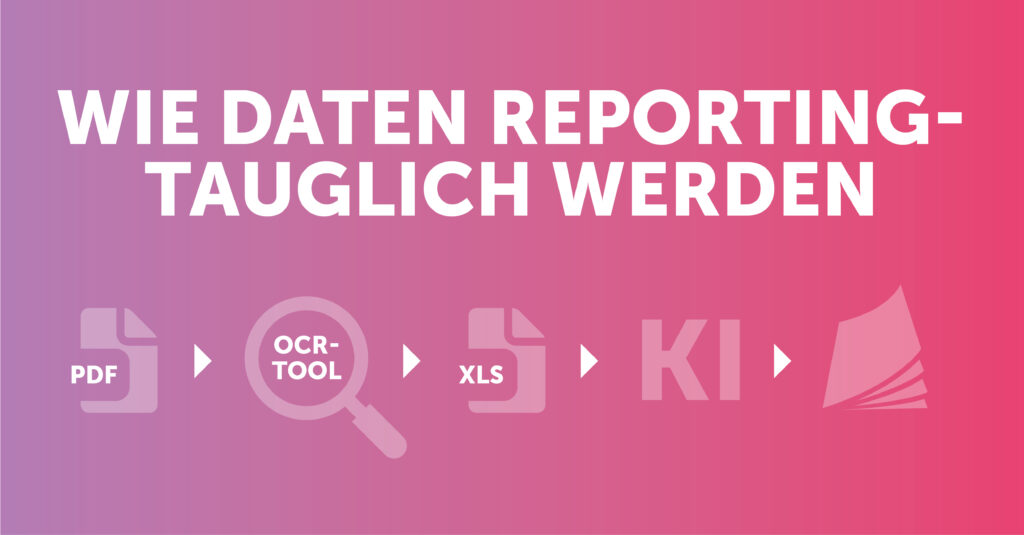OCR and AI in investor relations: From data hurdles to automated analysis in German SMEs

When it comes to financial and sustainability reporting, many teams face the same hurdle: financial and sustainability data from different areas of the company must be compiled, checked, and processed in the shortest possible time. However, the data is often available in different formats: sometimes in neatly structured tables, sometimes only as graphical PDF extracts. This is particularly tedious in the case of balance sheet templates – they first have to be converted into editable tables before analysis can begin.
So how can you achieve a fast, reliable workflow?
Limitations of today’s LLMs in text recognition
When using large language models (LLMs) directly, you quickly reach their limits. Systems such as ChatGPT or Claude can attempt to convert image files into tables using generated Python code. In practice, however, they do not yet deliver reliably usable results. The great appeal of such a one-step solution—text recognition, analysis, and reporting in a single prompt chain—is still a long way off.
Currently, OCR (Optical Character Recognition) and analysis must be performed separately!
Why Excel is not sufficient
Many users resort to Excel for the first step. Using the “Data from Picture” function, simple graphics can indeed be transformed into tables. However, the process is prone to errors: incorrect column recognition, problematic number representation, manual rework. This is simply too time-consuming for a professional reporting process.
Professional OCR tools are the better choice
Specialized solutions with AI-based OCR technology, which convert PDFs into editable formats with high accuracy, work much more reliably. Users can check and correct results directly—and export numerical values as calculable values. Such tools have long been established in professional reporting and offer significantly higher precision than Excel functions or generative models.
Automated analysis with AI – the next step
Once the data is available in a computable form, AI can unleash its full potential:
- cascading use of LLMs (one model extracts, a second analyzes, a third writes the report),
- prompt engineering for investor reports,
- report automation that is stylistically adapted to the company’s language.
A fully automated “one-step” solution does not yet exist. But the direction is clear: multimodal models that seamlessly combine text, images, and numbers will shape the future.
Conclusion: Expert guidance remains indispensable
For German SMEs, this means that automated financial and sustainability communication is becoming increasingly powerful, but still requires experts to control, monitor, and correct processes. AI does not replace experience—it enhances it.
The Silvester Group sees itself as a partner for technology-oriented financial and sustainability communication. Our goal: to design automation processes with artificial intelligence in such a way that medium-sized companies benefit – through greater efficiency, fewer errors, and better decision-making. We would like to discuss this with you – whether in Hamburg or nationwide. The Silvester Group supports companies in integrating AI technologies into their reporting in a practical manner.
Interested? Feel free to contact us.

